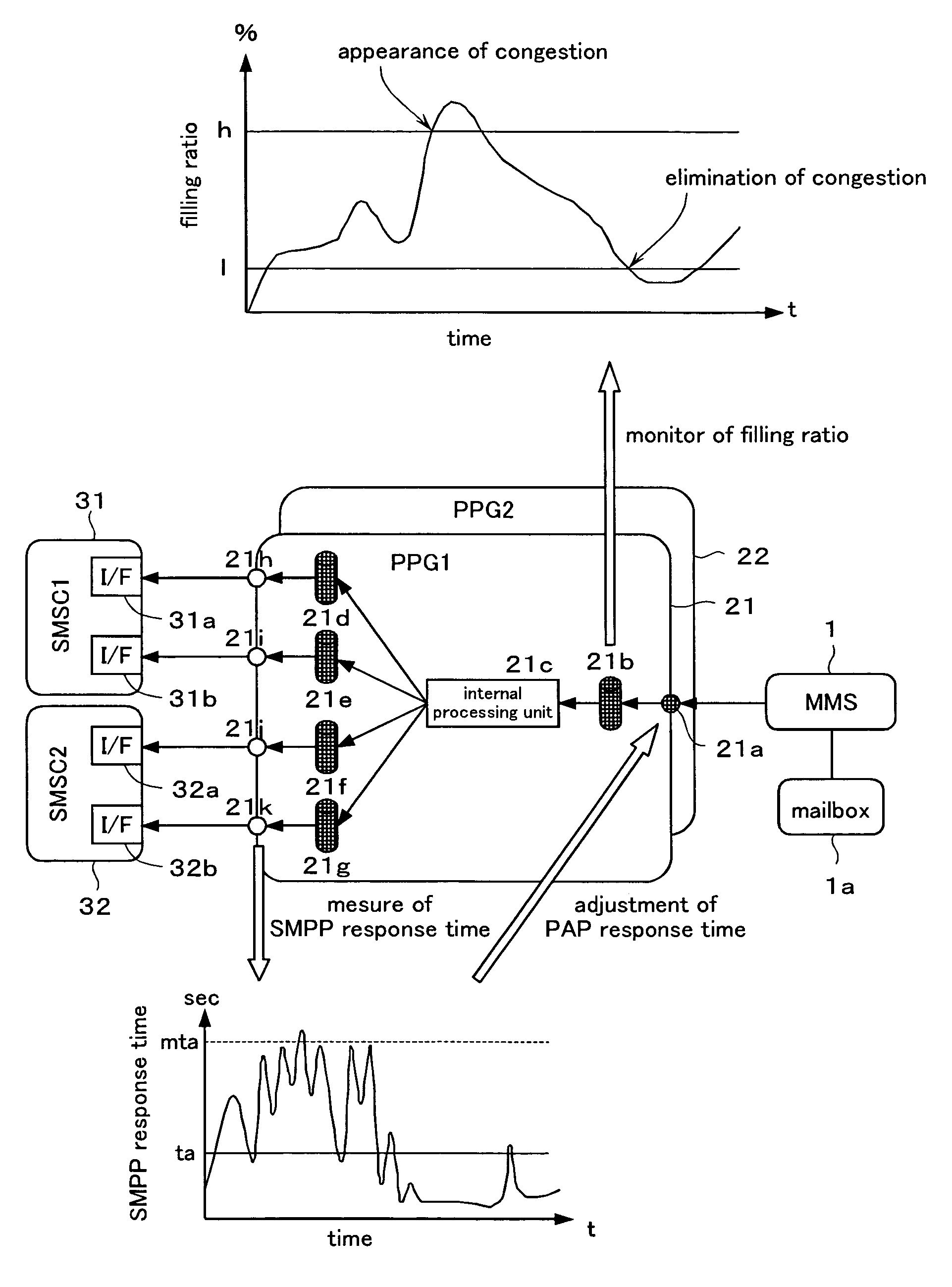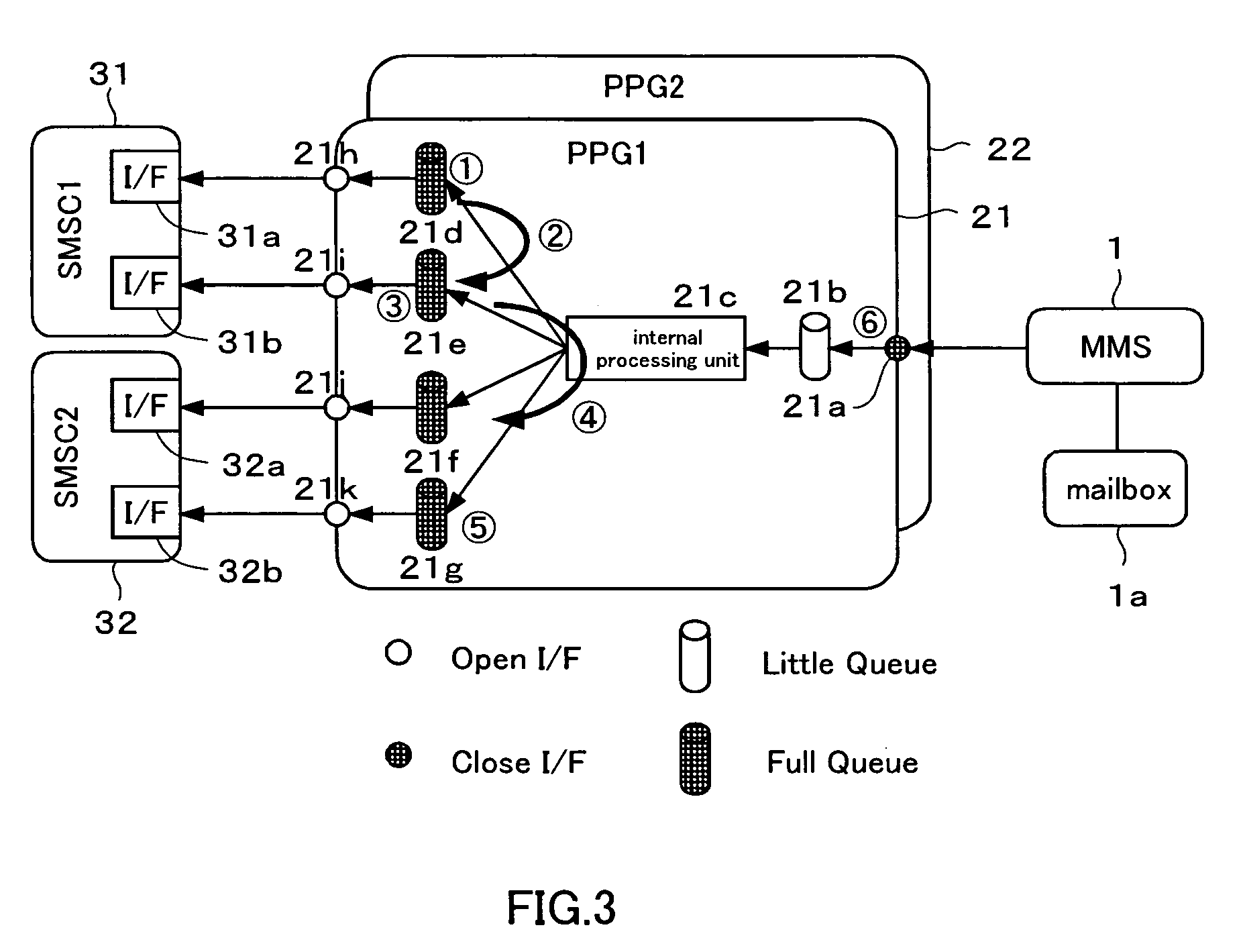Station
a technology for controlling stations and congestion, applied in data switching networks, frequency-division multiplexes, instruments, etc., can solve problems such as the inability of the protocol to prevent or eliminate the appearance of congestion autonomously, the risk of processing being interrupted or terminated in smsc b>3/b> or ppg, etc., to achieve the elimination of congestion in the interconnected station on the output side, the effect of reducing the degree of retention on the output sid
- Summary
- Abstract
- Description
- Claims
- Application Information
AI Technical Summary
Benefits of technology
Problems solved by technology
Method used
Image
Examples
Embodiment Construction
[0035]The configuration of the station of the preferred embodiment of the present invention is shown schematically in FIGS. 1 to 3. FIG. 1 shows a state in which congestion has occurred in a specific session. FIG. 2 shows a state in which congestion has occurred in a specific SMSC. FIG. 3 shows a state in which congestion has occurred in all the SMSC.
[0036]FIG. 1 shows only the configuration of the MMS 1, PPG 2, and SMSC 3 in the multimedia message allocation system shown in FIG. 5. The PPG 2 is composed of 2 units: a first PPG (PPG1) 21 and a second PPG (PPG2), and the SMSC 3 is also composed of two units: a first SMSC (SMSC1) 31 and a second SMSC (SMSC2) 32.
[0037]The congestion control means of the station in accordance with the present invention will be explained hereinbelow with reference to FIG. 1. If the MMS 1 receives a multimedia message (MM-message), the MM-message is stored in a mailbox 1a of the subscriber, which is a customer in the mailbox 1a, a reception notification t...
PUM
 Login to View More
Login to View More Abstract
Description
Claims
Application Information
 Login to View More
Login to View More - R&D
- Intellectual Property
- Life Sciences
- Materials
- Tech Scout
- Unparalleled Data Quality
- Higher Quality Content
- 60% Fewer Hallucinations
Browse by: Latest US Patents, China's latest patents, Technical Efficacy Thesaurus, Application Domain, Technology Topic, Popular Technical Reports.
© 2025 PatSnap. All rights reserved.Legal|Privacy policy|Modern Slavery Act Transparency Statement|Sitemap|About US| Contact US: help@patsnap.com



